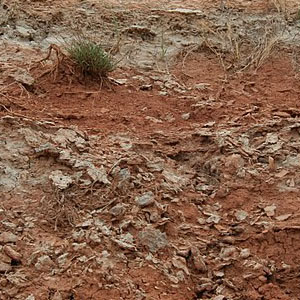Changes in Eutric Cambisol due to long-term mineral fertilisation: A case study in Serbia

Accepted: 2 April 2022
HTML: 34
All claims expressed in this article are solely those of the authors and do not necessarily represent those of their affiliated organizations, or those of the publisher, the editors and the reviewers. Any product that may be evaluated in this article or claim that may be made by its manufacturer is not guaranteed or endorsed by the publisher.
The paper presents the results of a 50-year fertilisation experiment on Eutric Cambisol with increasing doses of nitrogen and constant doses of phosphorus and potassium. The changes in main parameters of soil fertility were compared with the initial level at the beginning of the experiment in 1963 (baseline), as well as with the adjacent natural meadow soil. The long-term application of mineral fertilisers without replenishment of calcium resulted in strong acidification, an increase in clay content, an increase in the number of fungi, and a decrease in the number of ammonifiers and oligonitrophiles. In the fertilised treatments, an increase in the content of plant-available phosphorus and potassium and a significant decrease in the plant available boron and zinc with an increase in the N dose were observed. Long-term addition of high doses of N harmed the total number of microflora, actinomycetes, ammonifiers, and oligonitrophiles compared to untreated meadow soil. Significant changes in soil’s physical and chemical properties resulted in the transformation of Eutric Cambisol into Dystric Cambisol. Inappropriate agricultural practices, such as adding only mineral fertilisers, can lead to significant soil degradation even on the sites with favourable bioclimatic conditions for cropping. The results showed that causal chains between microbiological and chemical parameters need to be better researched and understood in the future. This and other long-term experimental results should be used to calibrate agro-ecosystem models in Serbia.
Highlights
- Due to a long-term mineral fertilisation Eutric Cambisol transformed into Dystric Cambisol.
- A sharp drop in soil pH did not affect the yield of crops.
- The total number of microflora correlated with the amount of fungi in the soil.
- Degradation of soil fertility parameters persists under mineral fertilisation.
How to Cite

This work is licensed under a Creative Commons Attribution-NonCommercial 4.0 International License.
PAGEPress has chosen to apply the Creative Commons Attribution NonCommercial 4.0 International License (CC BY-NC 4.0) to all manuscripts to be published.

 https://doi.org/10.4081/ija.2022.2029
https://doi.org/10.4081/ija.2022.2029



